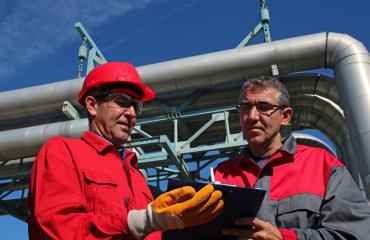
This article is from RISQ Consulting’s Zywave client portal, a resource available to all RISQ Consulting clients. Please contact your Benefits Consultant or Account Executive for more information or for help setting up your own login.

More than 14 people per day died while doing their jobs in 2016, highlighting the need for safety and procedural enhancements in the workplace. Employers are starting to embrace new technology in an effort to improve worker safety, including the following:
- Exoskeletons—Workers can wear exoskeletons to transfer weight from repetitive tasks and use less energy when moving objects. The result is a reduced risk of injuries as well as increased strength, dexterity and productivity.
- Virtual reality—This technology replicates physical environments and presents training opportunities for employees. It also allows workers to simulate hazardous tasks and identify safety needs. More benefits are expected as technology matures.
- Wearables—Wearable devices offer real-time monitoring of workers’ vital signs and can alert workers to the presence of environmental dangers. They can also cut health care costs by reducing health risks such as respiratory problems, cancer, dermatitis and hearing damage. An added bonus to employers is that wearables can provide an idea of what may have caused an employee’s injury before filing a workers’ compensation claim.
- Hand-held mobile devices—Although the use of mobile devices can be a distraction and safety liability, there are useful apps that detect safety hazards, log safety incidents, track OSHA requirements and even determine when the heat index is too high on job sites. The key to improving worker safety with hand-held mobile devices is using them responsibly.
- Drones—Sending drones into high-hazard areas instead of humans helps safely assess damage and plan emergency response.
INCORPORATING DATA SCIENCE
Aside from new devices, data science has enabled companies to analyze photos from job sites and then scan them for safety hazards, using an algorithm that correlates those images with their accident records.
Although the technology still needs some fine-tuning, companies can use such algorithms to rate project risks. As a result, the technology could prove extremely helpful in detecting elevated threats and then intervening with safety briefings.
TIME TO GET ON THE CLOUD
By using the cloud, companies have been able to completely overhaul the way they interact with each other and with their workers. The cloud consists of multiple networks of servers that allow apps to be accessed anywhere through the internet instead of confined to a particular computer or network.
Businesses that have projects and crews in multiple locations especially appreciate the benefits of the cloud, since it is efficient and allows for the seamless transfer of information and monitoring of workers’ safety.
SUCCESSFULLY DEPLOYING NEW TECHNOLOGY
New technology can be a waste of money if it is not deployed properly. It’s easy to get caught up in the “wow factor” of technology and lose sight of what the intended improvements are. Without a plan in place for deployment, this technological investment may be wasted.
Before seeking out new technology, consider ways to improve workplace processes. After improving these processes, it is easier to identify gaps that new technology can address. No amount of technology will help if it is processes that need to be fixed.




